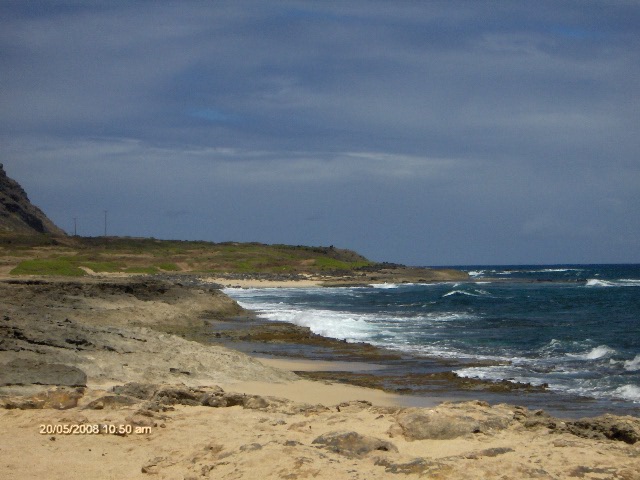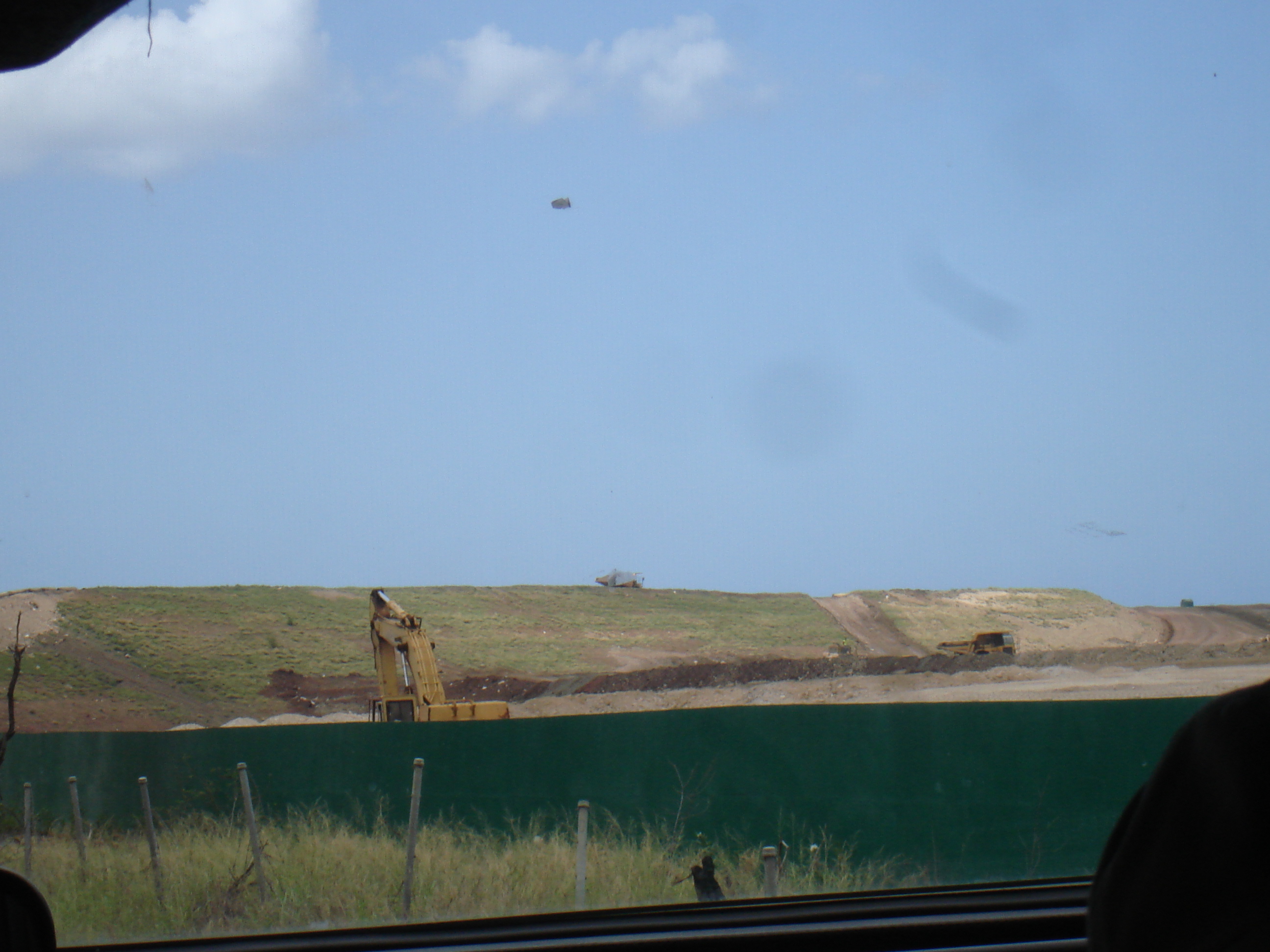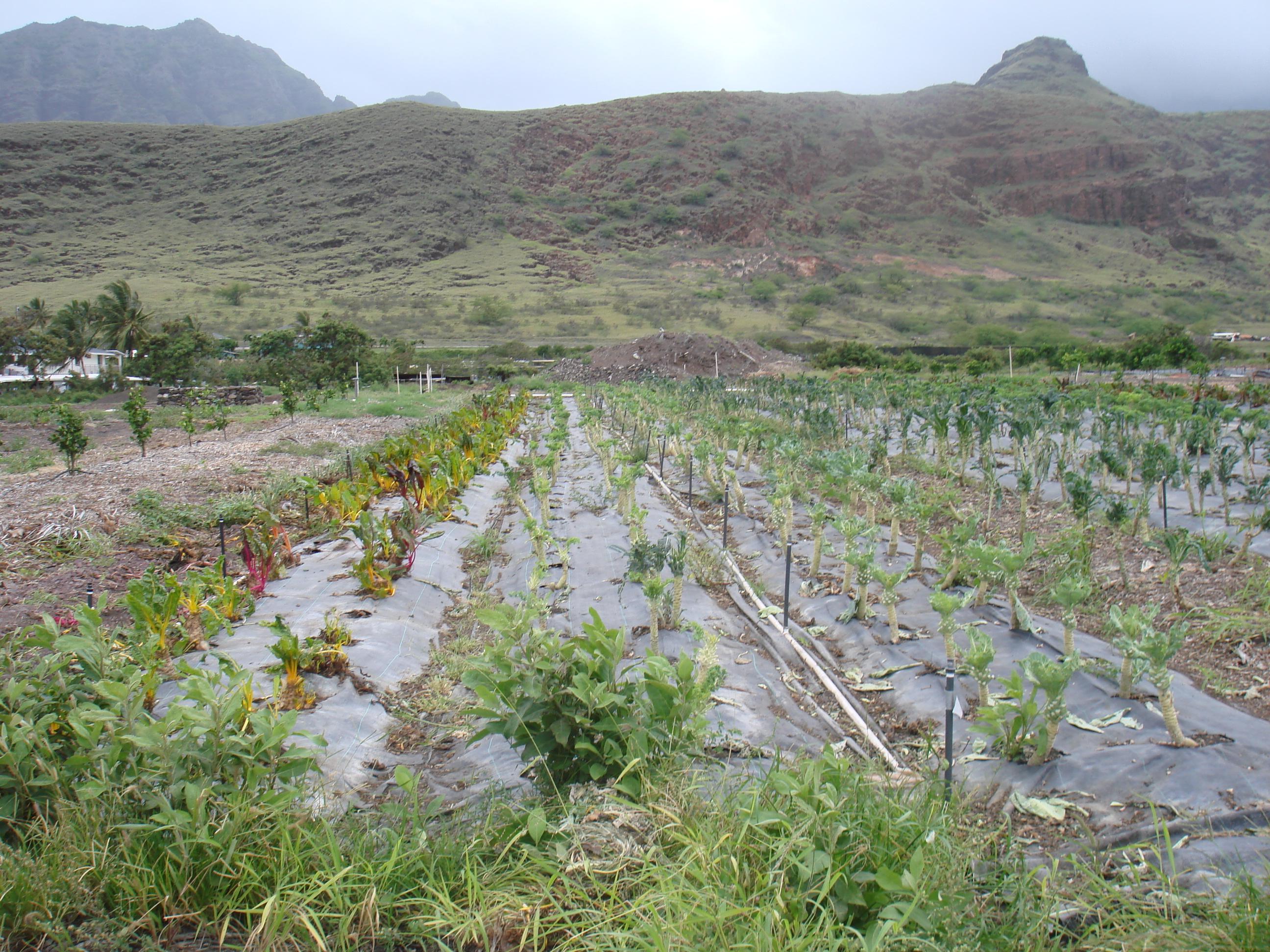Blog
News, updates, finds, stories, and tidbits from staff and community members at KAHEA. Got something to share? Email us at: kahea-alliance@hawaii.rr.com.
Come Talkstory - Shoreline Fishing Issues at Ka‘ena - June 27th
On Sunday June 27th starting at about 2:00 pm, fishers and ‘ohana will be gathering in Waiawa to discuss issues surrounding the management of Ka‘ena Point on O‘ahu. (Click to see map)
Located at the most northwest point of O‘ahu, Ka‘ena is one of the last relatively wild shorelines left on the island. It is a beloved fishing spot for many families, a spiritual pathway into the afterlife, and a refuge for endangered birds.
Its extreme weather and remote location helped to limit development, though it has suffered its share of urban burdens, including train tracks, military training, and most recently mud-bogging and uncontrolled bonfires.
As you may already know, Ka‘ena has been the focus of many regulatory attempts over the years. Most of these past efforts have met with failure due to lack of community support. Here is a link to the long list of abandoned management schemes at Ka‘ena.
With a brand of tenacity unique to state government, once again, the community faces a new management plan developed by staff at the Department of Land and Natural Resources with only selected input from community members. The state needs a new management plan because Ka‘ena will likely be highlighted as one of O‘ahu’s wilderness camping areas under DLNR’s new “Recreational Renaissance.” Recreational Renaissance is just a nifty name for another scheme to raise money from the use of state land in a wide range of not-always-compatible ways, including the collection various permit and entry fees to state parks. A draft of the state’s plan for Ka‘ena will be open for general public comment at a hearing in late July.
In anticipation of this meeting and in response to many complaints about state management, shoreline fishers from around O‘ahu are gathering at a farm in Waiawa on June 27th to talk about the many issues facing this community. The recent trend in harassment of fishers by DLNR enforcement officers and HPD has led many to forego fishing the way their families have for generations. This is related to current state regulations that limit the longstanding practice of over-night fishing and current proposals to impose new permitting requirements on shoreline fishers. Click here to visit a blog specific to Ka‘ena management issues.
This is a tough issue to grapple with. For me, I think the disconnect was said best by one lifelong fisherman from Waipahu:
“Why you imposing fees on me, when I only can catch enough to feed my family, but you do nothing, nothing to prevent the massive fish takes by these commercial guys, who come in here just when the fish start to run and take the whole school one time?”
If you are interested in learning more about shoreline fishing issues on O‘ahu and want to connect with the local fishing community, please contact Summer at 753-4221/ culturalpractice@gmail.com to RSVP for the public meeting on June 27th at 2pm in Waiawa. She asks that you bring own chairs.
Preliminary Victory in Long Battle to Save Farmland
From Marti:
The first preliminary hearing in the whole purple spot saga was held on May 20th before the Land Use Commission. The Land Use Commission met to decide whether the Environmental Impact Statement is complete for Tropic Land’s proposal to turn 96 acres of fertile farm land into an industrial park at the back of Lualualei Valley (the industrial park is the purple spot).
All six commissioners present agreed that the EIS is complete, but some of them made clear that based on the public testimony presented they had serious concerns about the proposal itself.
Testimony presented to the Land Use Commission alleged that Tropic Land, LLC is operating an unauthorized truck baseyard on agricultural land and has illegally mined pohaku from a known ancient Hawaiian cultural site.
“At least 85% of the farmland has been covered with asphalt,” said one eye-witness.
Activities like storage of trucks, and vehicle repair and maintenance are not allowed on land zoned for agricultural use. Waianae Coast residents said they filed complaints with both the Department of Land and Natural Resources’ Enforcement Branch and the City and County of Honolulu.
Tropic Land, LLC has been cited on at least three other occasions for engaging in activities on the Lualualei property that were not consistent with its agricultural classification.
Pictures also documented the mining of stones on preservation land adjoining the Tropic Land parcel. Cultural surveys conducted on the parcel in the 1990’s confirm that this stones comprised a substantial, culturally significant platform.
A Nanakuli resident testified that ¾ of the substantial stone platform had been removed and some of the stones were used to make a sacred place to reinter Hawaiian burials exhumed by Wal-Mart on Keaaumoku Street. Tropic Land, LLC did not have authorization from the State Historic Preservation Division to remove stones from this site.
Tropic Land, LLC was before the Land Use Commission to change the classification of their Lualualei Valley property from agricultural to urban, in order to allow them to construct an industrial park on the property.
The Land Use Commission accepted Tropic Land, LLC’s final environmental impact statement for the industrial park proposal, but not before voicing concerns about the testimony presented by the public.
Holding up a picture of trucks parked behind a fence on the Tropic Land parcel, Commissioner Contrades asked Tropic Land’s attorney William Yuen, “is this correct?” Mr. Yuen said he had not seen the photograph, but that the property is not paved and trucks are not being stored on the property at this time.
Commissioner Wong asked Yuen a series of questions to clarify that acceptance of the EIS did not in anyway demonstrate support for or ensure approval of the project.
Commissioner Teves requested that the Commission perform a site visit to “see the so-called commercial use of the property in its present form, to see if it is true or not.”
What does this mean for the future of the purple spot?
It means that the formal one-year process to decide whether to rezone this part of Lualualei Valley from ag to urban has started. The hearing on the actual rezoning decision will be held on September 9, 2010 at 9:30 before the Land Use Commission.
It also means that the developer will have a very hard time arguing that this industrial park proposal is consistent with Waianae’s Community Sustainability Plan, since the current has no purple spot allowing for industrialization of this area… and the amended one with the purple spot has not been adopted by the Honolulu City Council. In fact, staff at the city said they don’t expect the Waianae Community Sustainability Plan to come before the Council the Fall of 2010.
Tight fit at the LUC
From Shelley:
Last month, we went to the Land Use Commission for the proposed rezoning of agriculture land to industrial land in the back of Lualualei Valley. From the moment I got there I felt lost–the actual hearing room is tucked away on the 4th floor with very little signage. The building is set with a corridor that goes around in a square with rooms toward the outside of the building and then a bigger square room in the center (although it’s not very big either). Before I realized the layout looked like a racetrack I was wandering around in a circle and ran into 4 other people looking for the LUC! I ducked into one of the offices and got directions. When we got to the actual hearing room I was shocked at how small it was! This is the room where some of the most important decisions about Hawai’i's land and our access to that land happens… in this itty bitty place?!
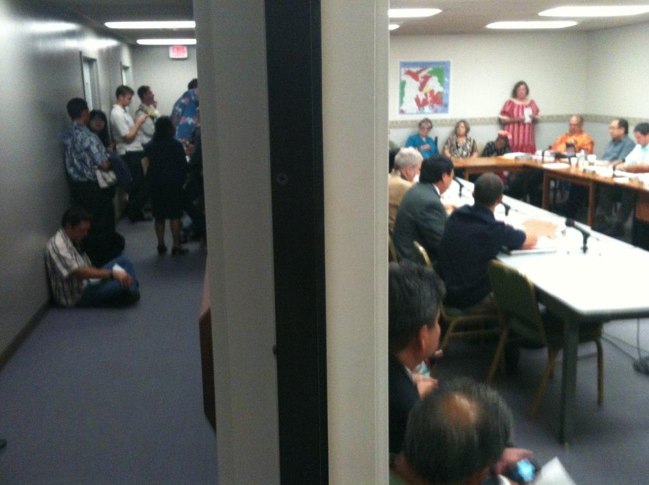
It doesn’t inspire confidence that the commission that decides on how the space on our island is used, haven’t done such a good job managing their own space! There are tables arranged in a long rectangle with a big empty puka in the middle! This leaves enough space for a single ring of people to sit and stand around 3 of the 4 walls of the room. Everybody else has to overflow into the hallway where you can’t hear anything! Also, the guy who has the job of passing out printed materials from the testifiers sits on the other end of the rectangle and has to shimmy along the wall behind the commissioners to get the documents. There must be a better layout!
The point of my rant is that this kind of space doesn’t encourage public participation! Moreover, having the hearings during the workday prevents many people from participating. There must be a better way!
Tell 'um, Chris Lee!
We’re liking this op-ed by Rep Chris Lee, in Tuesday’s Advertiser, on why selling state lands to fix the state budget is an exceptionally bad idea. An excerpt:
The sale of state land makes exceptionally poor financial sense and cheats taxpayers out of billions of dollars. More important, it defies our constitutional obligation to hold Hawai’i's greatest resource in public trust for future generations. Ultimately, the life of the land will not be perpetuated by selling our children’s legacy, especially when the permanent long-term loss far outweighs the temporary short-term gain.
See the full opinion piece: http://www.honoluluadvertiser.com/article/20100518/OPINION03/5180309/Even-in-a-crisis-selling-state-land-a-bad-idea
Riding the Justice Bus
From Shelley:
Last weekend we hosted the third Environmental Justice tour of Wai’anae. We had a nice mix of people hailing from different parts of the island and from many different backgrounds–professors, students, locals, newcomers, young, and not so young–it was great. ![]() Before I begin the breakdown of what we saw, I just have to say mahalo to the Wai’anae aunties who always inspire me–if every community had a cadre of aunties like them, surely the world would be a better place. They know and love their aina and will protect her with the same zeal that anyone would fight for their grandma or grandpa.
Before I begin the breakdown of what we saw, I just have to say mahalo to the Wai’anae aunties who always inspire me–if every community had a cadre of aunties like them, surely the world would be a better place. They know and love their aina and will protect her with the same zeal that anyone would fight for their grandma or grandpa.
On our tour we heard many stories about the landscape of the area. I’ve always loved the mountains in Wai’anae, but now I really see them differently! We watched the demi-god Maui being born, two lovers greeting each other in the mist, and even mano (sharks) in the mountains! We saw Hina’s cave and beautiful Makua Valley (although currently occupied by the US Military). Along the way we also saw some not so beautiful things. We drove by PVT, a construction landfill which houses especially hazardous materials oftentimes from construction demolitions. There is a giant mountain of asbestos that is literally stories high, right next to a neighborhood. We were all shocked to see that there was nothing but a thin black piece of material between someone’s backyard and the asbestos mountain, jokingly named Pu’u ‘Opala–Rubbish Mountain.
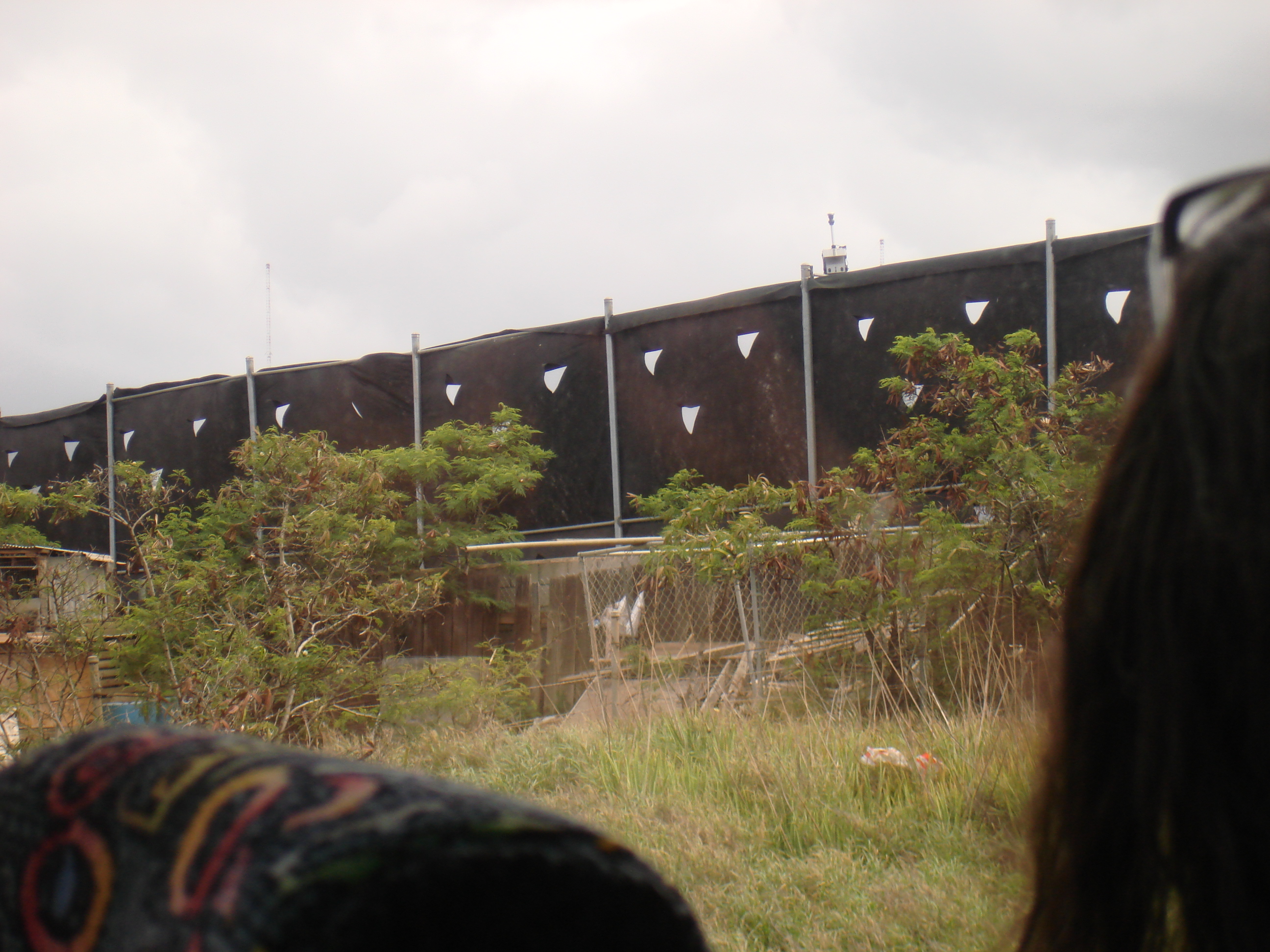
This is the flimsy cloth barrier that supposedly protects the people who live in the neighboring community.
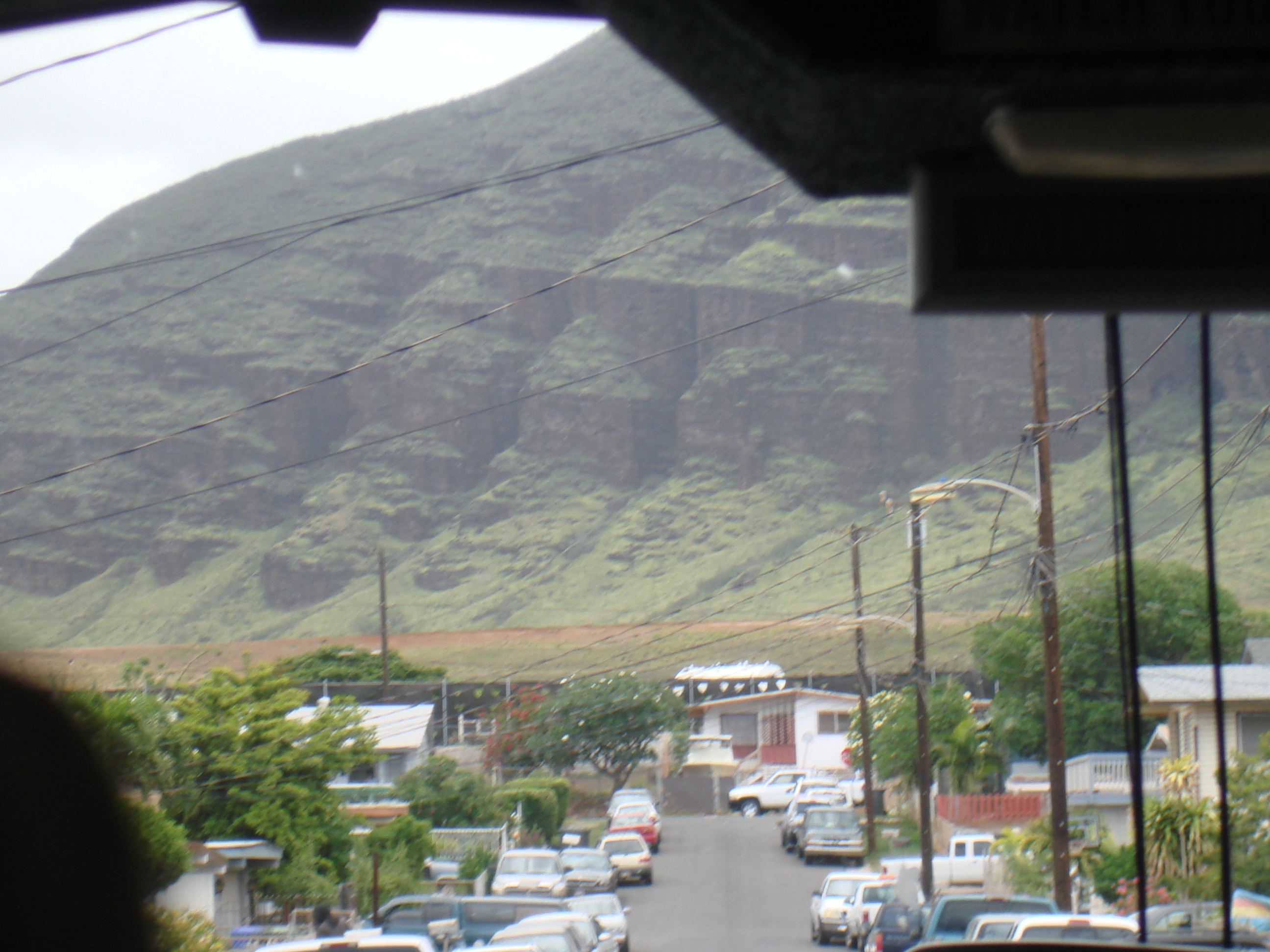
Look closely, that light brown line cutting the picture horizontally is the top of the asbestos hill. Much higher than the flimsy cloth barrier "protecting" the residents.
The place where the beautiful and pollutant met was at the base of the mountains, near PVT. We got off the bus and were greeted by 2 horses. This is the site that they are trying to get changed from agriculture to industrial land. I cannot imagine a landfill in such a pristine place. We held this bus tour to ask the participants to stand in solidarity with this community to fight off the “purple spot”–which is what this proposed industrial zone would look like on a map. You can go here to learn more and sign a petition!
We ended the tour up at MA’O Farms to show us a system that is working in Wai’anae, in stark contrast to the dumps and proposed dumps that are not a good fit. Mahalo to Kamu Enos for showing us around! We even got to learn about sustainable building practices using materials that were all locally sourced. MA’O answers back to all the people who think that Wai’anae is too dry to grow food!
Mahalo to all the aunties for showing us what aloha aina feels like. I loved hearing them gush about the legends of Wai’anae! I truly will never see Wai’anae the same again. Our next bus tour is July 24, leave a comment if you want to reserve your spot! ![]()
Mahalo to Candace Fujikane for the pictures! ![]()
Ka Makani Kaiaulu o Wai'anae
From our friends at AFSC, about a great summer learning opportunity for high-schoolers on O’ahu:
We are Ka Makani Kaiaulu o Wai’anae. We are learning how to promote environmental justice in Wai’anae.
We know there is a problem – environmental racism.
We swim and play in these waters. We eat food from the land and sea here. We all have family members who are sick with asthma or cancer.
We want environmental justice.
1. Stop or reduce all harmful impacts, not just the streams, but the sources of contamination: landfills, military and industry.
2. We want the clean up of all the contaminated sites.
3. We demand a healthy environment for our community.
A healthy environment is a human right!
>><<
Ka Makani Kaiaulu o Wai’anae is a summer youth environmental justice organizing training institute for youth from the Wai’anae coast to learn cenvironmental justice and ommunity organizing skills.
The program is geared to youth (age 15 – 19) from Wai’anae who care about the health and well being of their families, communities and the ‘aina. Applicants must be committed to learning community empowerment skills and using those new skills to help their community and the environment become healthier.
We will learn about issues affecting the Wai’anae community, social justice movements in Hawai’i and around the world, the basics of making positive social change, and digital story telling as a medium for shaping the vision and plan for the future of our community.
The Ka Makani Kaiaulu o Wai’anae Institute runs four weeks – June 21 through July 16, 2009, weekdays from 9am to 2pm.
Most activities will take place at the Leeward Community College Wai’anae office (86-088 Farrington Hwy, Suite 201, Wai’anae, HI 96792, Phone: 696-6378). The class will take field trips to help students better understand the issues affecting Hawai’i and the depth and scope of doing this work.
Why should you join other students this summer in this life changing experience? Wai’anae is under attack. It is an assault against the community and against the ‘aina, with military bombs and toxic chemicals, contaminated landfills, water pollution, chemical weapons, destruction of cultural sites, rising costs of living and growing numbers of houseless families. The Ka Makani Kaiaulu o Wai’anae Institute will give the selected candidates a way to learn skills for making grassroots community change and a forum to present their ideas on how to improve conditions for peace and justice and environmental sustainability.
Program eligibility
* Must be between the ages of 15-19.
* Must be self-motivated and able to work well in a team towards a common goal.
* Must have the desire to protect the environment and the health and well being of the Wai’anae community.
Participants who successfully complete the program will receive a $200 stipend.
Interested? Email Kyle Kajihiro at KKajihiro@afsc.org
A little explanation.
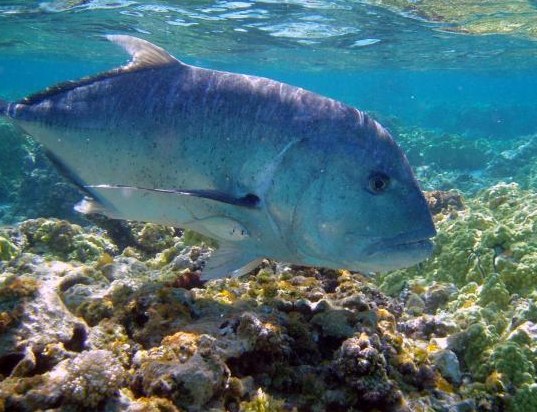
From Miwa:
I wrote the little explanation below the other day to Uncle Bill Aila, Jr. in response to an email from him. Though it was written for him, I thought I would share it here on our blog, as others may have questions about KAHEA’s support of Na Koa and Koani Foundation in their request for intervention on World Heritage Site designation for the Northwestern Hawaiian Islands:
First and foremost, KAHEA fully supports legal protections promulgated in the State Refuge and the Monument, including the prohibition on commercial fishing within 50 miles of the islands. We believe deeply in a vision of full conservation of the NWHI, as it represents a significant place of refuge for cultural practice, for native endangered species, and for some of the last predator-dominated reefs remaining on the planet.
However, as you know well (!), we have had, and continue to have, some deep concerns about management in the NWHI by the state and feds. Including:
1) Lack of meaningful prioritization for activities in the NWHI, or of analysis of cumulative impacts (taking into account past activity–including legacy over-exploitation and military activity)
2) Weak and disorganized permitting – “unified” permit process not really very unified in implementation
3) No enforcement plan, failure to push for accountability/mitigations/appropriate limits on military activity in the NWHI
4) Lack of funding/focus on cultural access or study
5) No public advisory entity established for Monument and limited venues/opportunities for public participation on decision-making
6) Lack of collaboration: Monument Management Board has not met in nearly six months? Multi-agency commitment to integrated ecosystem management getting lost on turf wars.
At the heart of this, is an exhibited inability for the co-trustees to collaborate effectively. Officials on the Federal side have acknowledged “some deep conflicts” which the Federal agencies are “struggling to resolve.” Though many are eager to take credit for the protections in place for the NWHI, implementation has lacked the political will to “make it work.”
We support Na Koa and Koani Foundation in their request for intervention for the following reasons:
In many communities, the decision to pursue a WHS designation comes only after years of conversation, debate, struggle and consultation. We are concerned that Native Hawaiian consultation on the WHS proposal was indeed inadequate, conveying unified support, when this is not in fact the case.
Further, World Heritage designation does not offer any additional enforceable protections for the NWHI. Indeed, over 30 World Heritage Sites are currently threatened with de-listing, due to poor management by those in charge, including the Belize Barrier Reef System and the Galapagos Islands. In an article written this past February, Goldman Prize winner John Sinclair heavily criticized Australian officials for neglecting conservation management for his beloved Fraser Island following its World Heritage designation, in favor of facility upgrades, and recreation management (e.g. widening roads) at the expense of “natural resource management, — environmental monitoring of wildlife and ecosystems, fire management, weed control, and quarantine.”
In many cases, this designation is used to promote tourism to a site (See http://www.expedia.com/daily/sustainable_travel/world_heritage/default.asp), which ironically increases the tourism impacts to the site intended for protection.
What World Heritage designation does offer is prestige and publicity. Prestige and publicity is not a need for the NWHI, as a great deal of public attention has already been placed on the protection of the NWHI. Indeed, a TIME magazine’s feature Earth Day article (Bryan Walsh) on oceans just last week noted NWHI protections as hopeful action in an otherwise pretty dismal picture of world-wide ocean resources management.
What is needed is not more attention or prestige. What is needed is accountable, integrated and cooperative management that puts the resource and the rightholders first.
Let’s do that–let’s get there–and we’ll have a place that can really be held up as an example to the world of how ocean conservation that strongly protects cultural practice can be done well. This is our hope, and vision ahead of our efforts.

